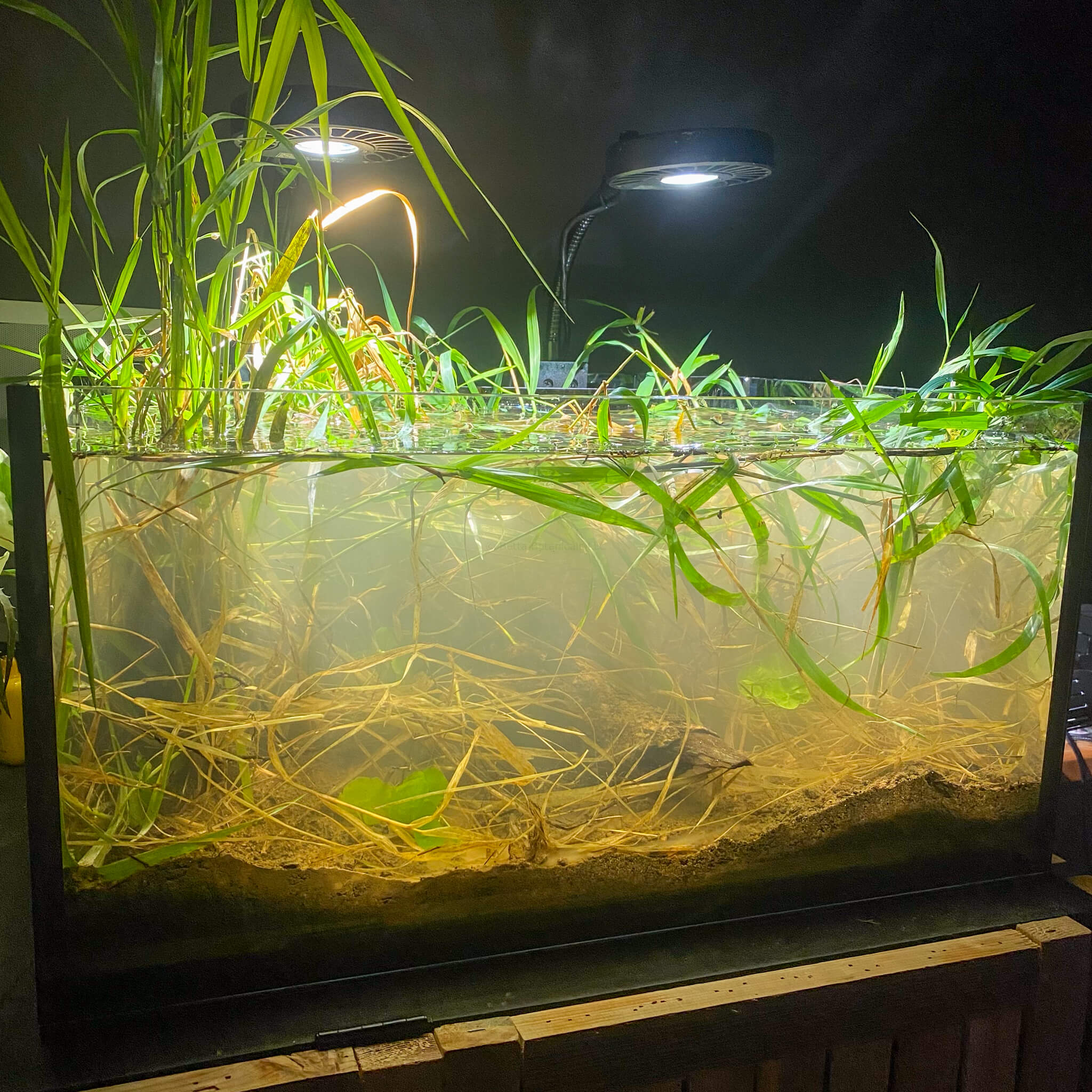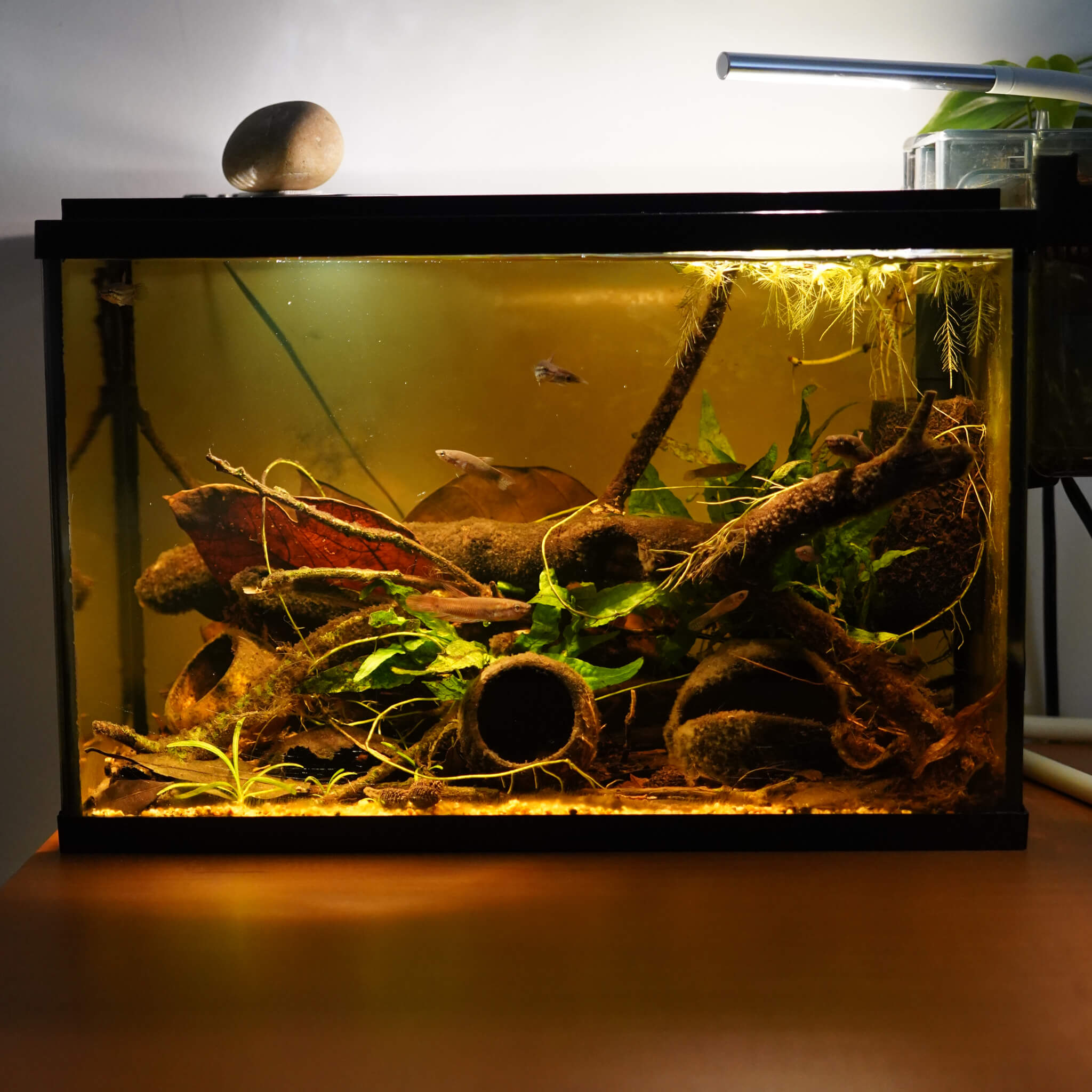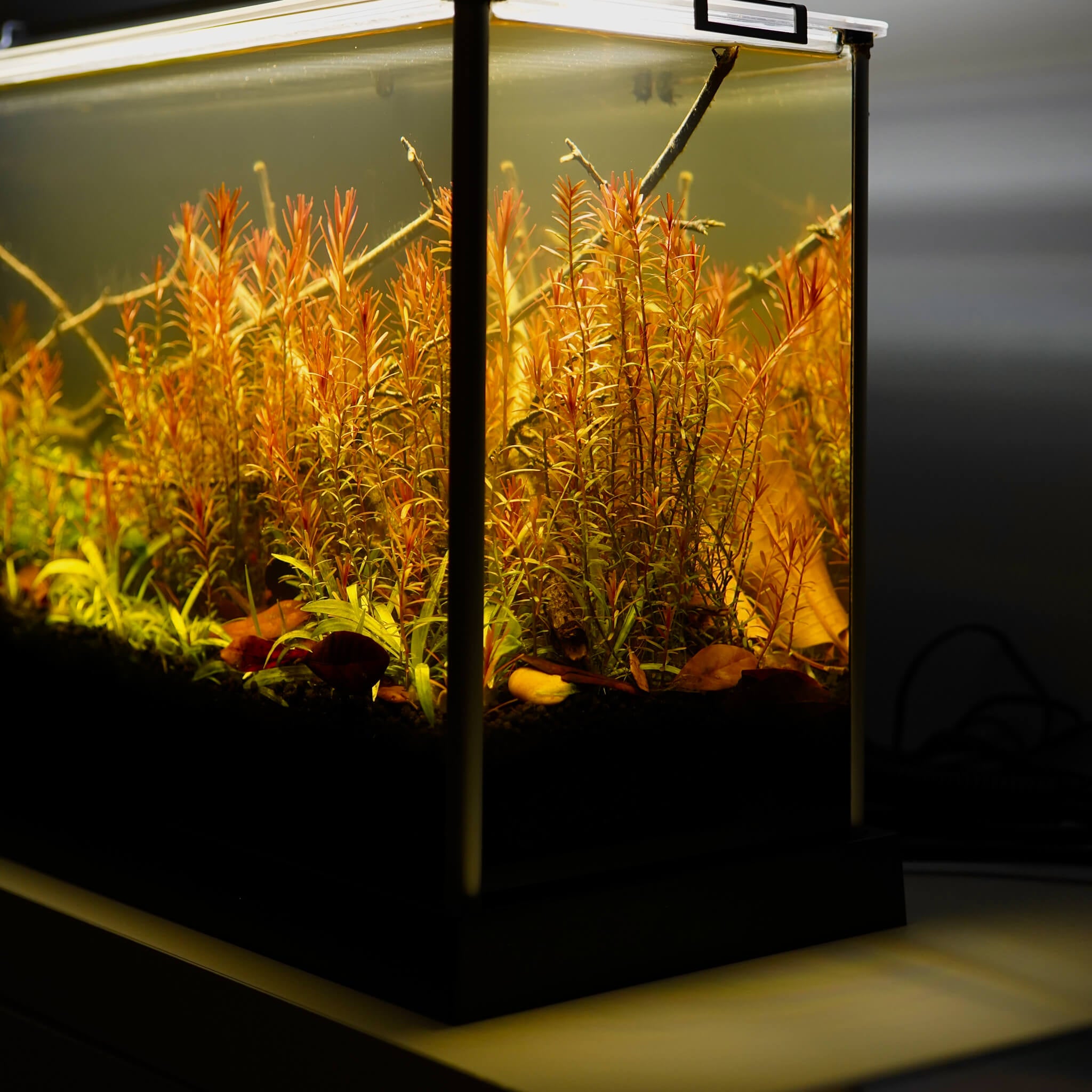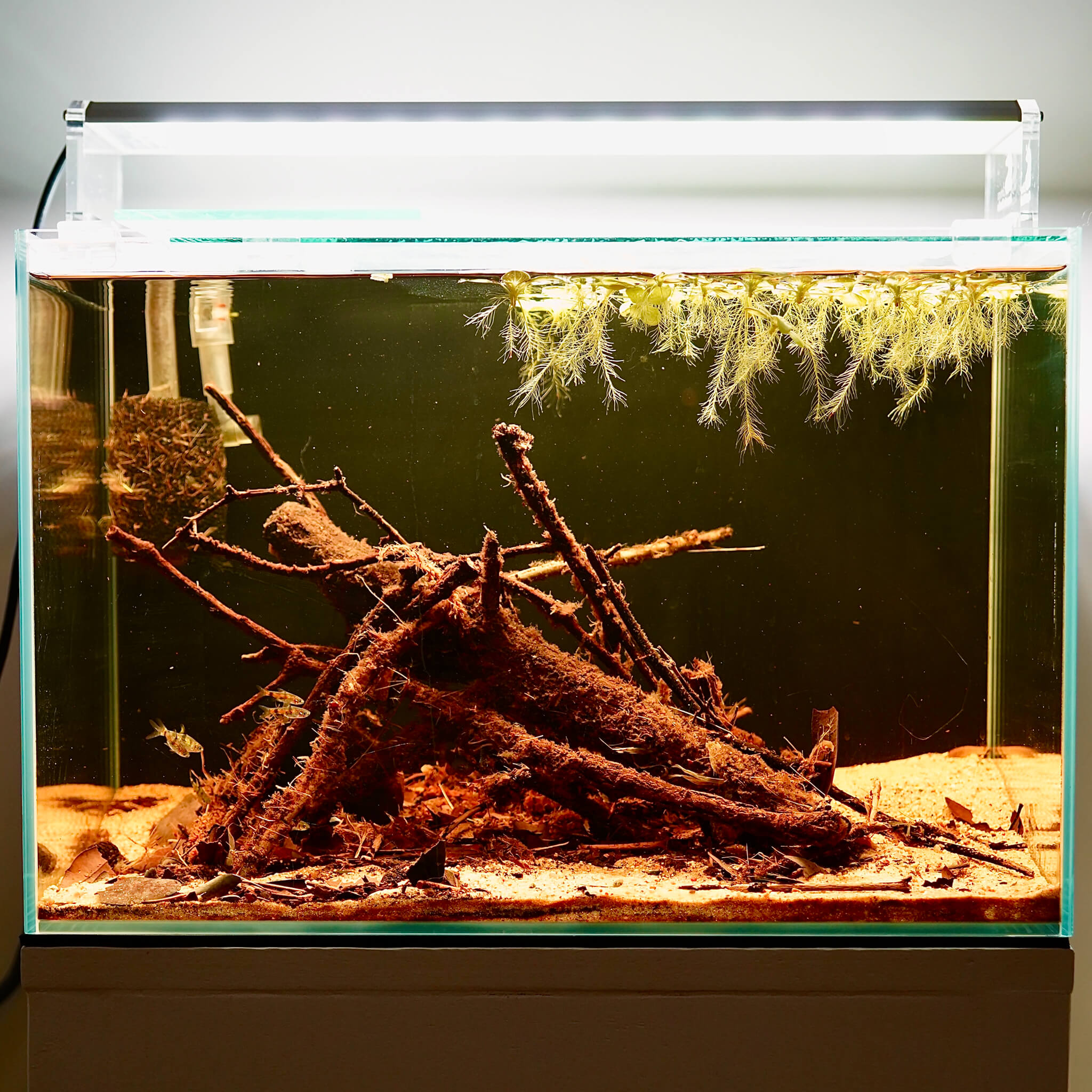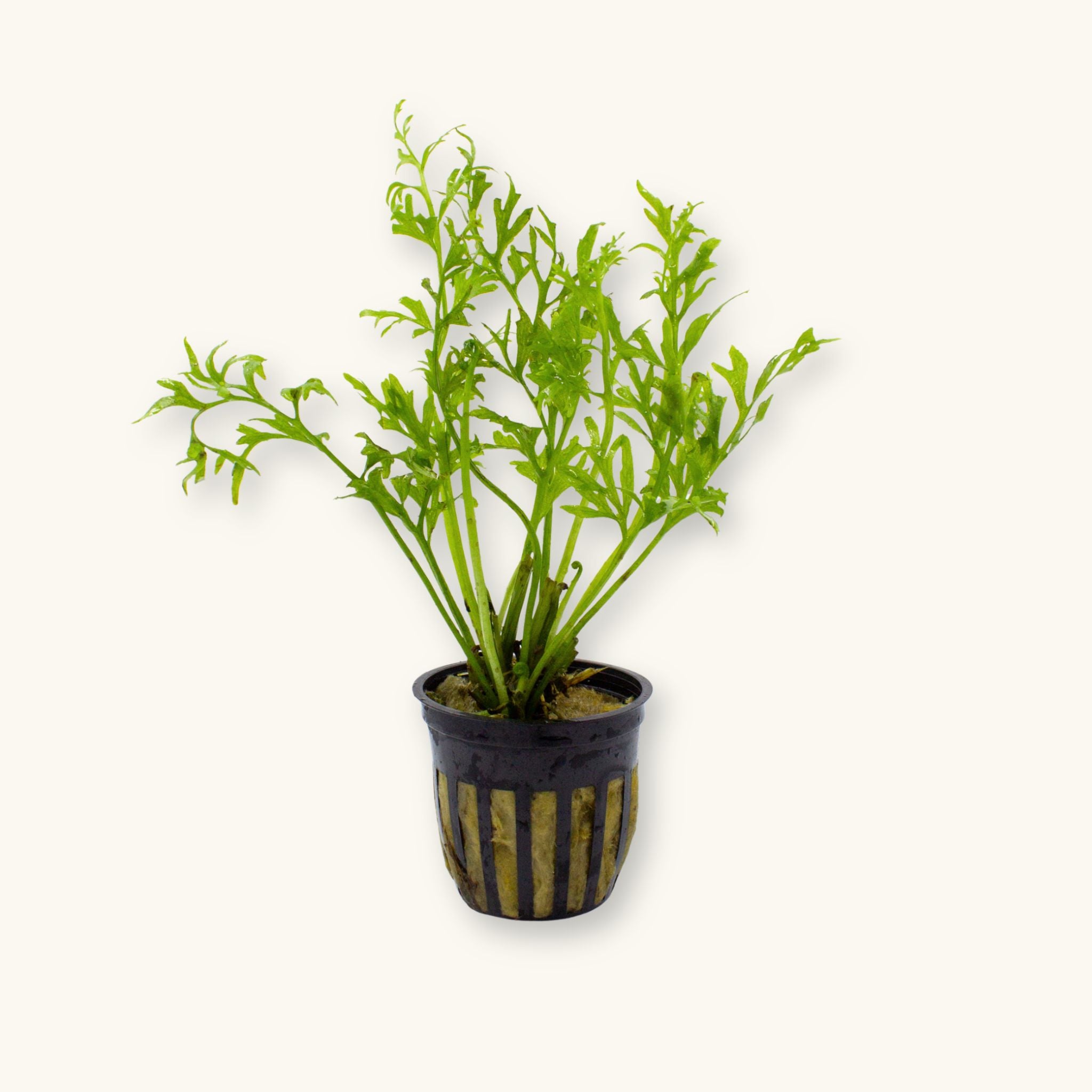
Water Sprite | Ceratopteris thalictroides
Water Sprite (Indian Fern)
Scientific Name: Ceratopteris thalictroides
Common Name: Water Sprite, Indian Fern, Water Hornfern
Water Sprite (Ceratopteris thalictroides) is a highly adaptable aquatic fern native to tropical and subtropical regions across Asia, Africa, and the Americas. Its finely divided, lace-like fronds contrast with broader-leaved plants, helping replicate the natural textures and sizes of aquatic plants. In blackwater and botanical method aquariums, this species thrives either rooted or free-floating, absorbing excess nutrients and providing refuge for fry and shrimp.
Often described as one of the most forgiving aquatic plants, Water Sprite grows rapidly in a variety of conditions, from shaded low-tech systems to well-lit, CO₂-enriched aquascapes. It plays a valuable ecological role by stabilizing nutrient levels, helping to reduce algae growth, and supporting the microbial community that develops among its fronds.
Many aquarists allow older, slightly browned leaves to remain intact, as they frequently produce small plantlets—a natural propagation process similar to Java Fern. Each mature frond may host multiple young plants that can be separated and replanted to establish new colonies.
Caring for Water Sprite in Blackwater Aquariums
Sold As: Both potted and bare root plants
Care Level: Easy; excellent for beginners
Lighting Requirement: Low–medium; higher light encourages faster vertical growth
CO₂: Not needed
Growth Rate: Fast; capable of filling the midground and surface zone
Tank Placement: Midground–background, or as a floating plant
Native Habitat: Asia and tropics worldwide; found in swampy forests, marshes, and slow-flowing rivers
Tint Tolerance: High; remains vigorous in tinted and humic-rich water conditions
Note: Some leaves may arrive with light browning—these are often fertile fronds carrying developing baby plants. We recommend leaving them attached until the plantlets are large enough to separate and replant.
All plants may contain snails or snail eggs, which we keep in our systems for their beneficial role in consuming detritus and algae. Our blackwater aquarium plants are supplied by H2OPlants and shipped according to their DOA policy. Your curated selection will arrive in their packaging, separate from botanicals and merch orders.
Water Sprite | Ceratopteris thalictroides
contrast the tint with greenery
While the aesthetic appeal of tinted waters can be quite attractive to us, the recreation of nature—which includes both submerged and emersed plants—is the end goal. Flora helps to improve water conditions, feeding patterns, spawning displays, and territory building.
Aquatic Plant FAQs
DOA Policy
Please ensure that you add a heat pack or cold pack to your orders if temperatures in your area are above 90°F or below 40°F. Click for more info on our DOA Policy.
Are these plants duckweed and snail free?
All Plants may contain snails or snail eggs, small macroinvertebrates, and duckweed. We keep them in all of our tanks for the benefits they provide. We have experienced the presence of small snails, ostracods, daphnia, and beneficial detritus worms.
Are your plants only for tinted water conditions?
Nope! All of our plants will grow perfectly in untinted aquariums that have CO2 and aquasoils, or low-tech planted aquariums. Our selection, though, is optimized for emersed plant growth and low- to medium-tinted water environments.
What is your aquatic plant shipping schedule?
We’re a small company and ship Tuesdays & Thursdays only. Orders placed Wednesday–Sunday → Ship Tuesday. Orders placed Monday–Tuesday → Ship Thursday
Are your plants just for bettas?
Nope. Our aquatic plants are safe for almost all aquariums, terrariums, vivariums, and paludariums. Many of our plants can be grown emersed in filter compartments, vivariums, or incorporated into wabikua.
What are Tannins?
Tannins are natural compounds released by leaves, seed pods, and bark as they decompose in water. They soften water, gently lower pH, and create the characteristic tea-stained tint found in blackwater habitats. But their role goes far beyond color—tannins fuel beneficial bacteria, fungi, and biofilms, which form the foundation of a healthy ecosystem. They also offer mild antifungal benefits and help reduce stress in fish by replicating the natural conditions they’ve evolved in. At their core, tannins are plant-derived antioxidants that connect your aquarium to the same processes at work in wild flooded forests and streams.




